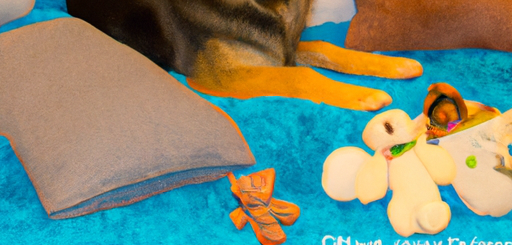Essential Dog Training Techniques For A Well-Behaved Companion
If you have a beloved furry friend at home, you understand the importance of having a well-behaved companion. Training your dog is not only essential for their safety and the peace of mind of your household, but it also strengthens the bond between you and your four-legged buddy. In this article, we will explore some essential dog training techniques that will help you shape your dog’s behavior and transform them into a well-behaved, obedient, and joyful companion. Get ready to embark on an exciting journey of training and discovery!

This image is property of pixabay.com.
1. Positive Reinforcement Training
Positive reinforcement training is a highly effective and humane method of teaching and shaping desired behaviors in dogs. It focuses on rewarding and reinforcing good behavior rather than punishing or reprimanding undesirable behavior. This approach not only makes training more enjoyable for your furry friend but also strengthens the bond between you and your dog.
1.1 Clicker Training
Clicker training is a popular technique used in positive reinforcement training. It involves using a handheld clicker device that makes a distinct clicking sound. The clicker acts as a marker to let your dog know when they have done something correctly.
To start clicker training, you first need to establish an association between the clicker and rewards. Click the device and immediately follow it with a treat. Repeat this several times until your dog understands that the clicker signifies a reward. Then, use the clicker to mark and reinforce desired behaviors during training sessions.
1.2 Treat Training
Treat training is another effective method of positive reinforcement. Dogs are naturally inclined to do things that result in rewards, and treats make excellent incentives. Use small, soft, and highly palatable treats that your dog loves.
During training, reward your dog with a treat when they perform the desired behavior. For example, if you are teaching your dog to sit, give them a treat as soon as their bottom touches the ground. Make sure to give the treat promptly to ensure that your dog associates it with the correct behavior.
1.3 Verbal Praise and Rewards
In addition to treats, verbal praise is a powerful tool in positive reinforcement training. Dogs thrive on praise and appreciate hearing that they have pleased their owners. Consistently use positive and enthusiastic vocal cues, such as “good job!” or “well done!”.
Aside from verbal praise, you can also incorporate other forms of rewards, such as petting, playtime, or a favorite toy. Different dogs respond to various types of rewards, so observe what motivates your dog the most and tailor your training accordingly.
1.4 Timing and Consistency
Timing and consistency are crucial aspects of positive reinforcement training. It is essential to reward your dog immediately after they have performed the desired behavior. This instant reward helps your dog make a connection between the behavior and the positive reinforcement.
Consistency is equally important since dogs thrive on routine. Set clear expectations and be consistent with your training methods and commands. If you allow your dog to perform a behavior intermittently, it may become confused and less effective in the long run.
2. Basic Obedience Commands
Teaching your dog basic obedience commands lays the foundation for good behavior and effective communication. These commands are essential for a well-behaved companion and can ensure your dog’s safety in various situations.
2.1 Sit
The “sit” command is one of the first commands many dog owners teach their pets. It is relatively easy to teach and useful in various circumstances, such as before meal times or when greeting guests.
To teach your dog to sit, hold a treat close to their nose and move it slowly upwards, causing their head to follow the treat. As their head moves up, their bottom will naturally lower into a sitting position. Once they are sitting, give the command “sit” and reward them with the treat and praise. Repeat this process until your dog understands the command without the lure of the treat.
2.2 Stay
The “stay” command is crucial for keeping your dog in place, whether you need them to stay within a designated area or wait patiently while you attend to something else. This command requires patience and practice.
Start by having your dog sit or lie down. With your palm facing towards them, say “stay” in a firm but calm voice. Take a step back and then immediately return to your dog’s side. Reward them with praise and a treat for staying put. Gradually increase the distance and duration of the “stay” command as your dog becomes more comfortable with the concept.
2.3 Lie Down
The “lie down” command is useful for situations that require your dog to settle down, such as visiting a café or when you need them to relax at home. It can be taught after your dog has mastered the “sit” command.
Hold a treat close to your dog’s nose and slowly lower it to the ground between their paws. As they follow the treat, their body will naturally lower into a lying position. Once they are lying down, give the command “lie down” and reward them with the treat and verbal praise. Repeat this process until your dog responds to the command without the need for a lure.
2.4 Come
The “come” command is vital for your dog’s safety and an essential part of off-leash training. It teaches your dog to return to you when called, no matter the distractions or circumstances.
Begin by leashing your dog and getting down to their level. Open your arms wide and excitedly call their name followed by the command “come.” As they approach you, reward them with praise and a treat. Gradually increase the distance between you and your dog when practicing the “come” command.
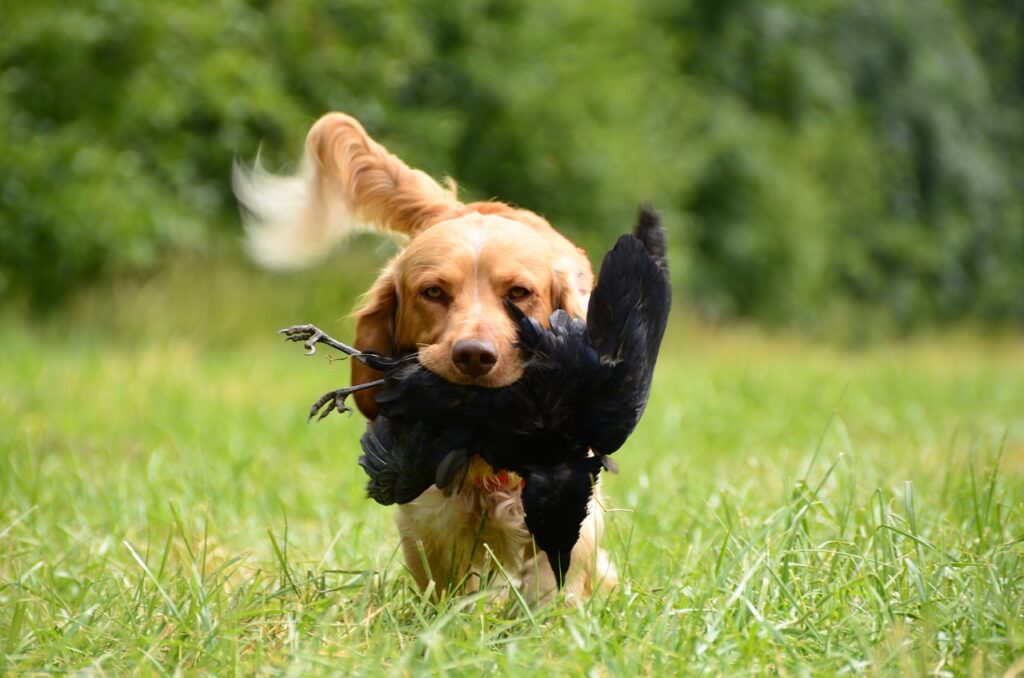
This image is property of pixabay.com.
3. Leash Training
Leash training is essential for both your dog’s safety and the comfort of taking them on walks. Proper leash etiquette helps prevent pulling, lunging, and other undesirable behaviors.
3.1 Loose Leash Walking
Loose leash walking refers to teaching your dog to walk calmly beside you without pulling on the leash. Leash pulling can be frustrating and make walks less enjoyable for both you and your dog.
Start by choosing a suitable leash and collar or harness for your dog. Attach the leash and hold it in your hand without tension. Begin walking, and as soon as your dog starts to pull, stop and wait for them to return to your side. Reward them with praise and a treat when they are walking beside you without pulling. Continue this process consistently, rewarding your dog whenever they walk without tension on the leash.
3.2 Heel Training
Heel training takes loose leash walking a step further by teaching your dog to walk politely beside you with their shoulder aligned with your leg. This command is especially useful when you need your dog to be close to you in busy or distracting environments.
To teach your dog to heel, start by holding a treat in your hand at your waist level. Begin walking and encourage your dog to remain close to your side with the treat. Reward them with the treat and praise for maintaining the correct position. Practice this command regularly in varying environments to reinforce the behavior.
3.3 Teaching ‘Leave It’ Command
The “leave it” command is imperative for keeping your dog safe and preventing them from picking up harmful objects or interacting with potential hazards during walks.
Put a treat or an object your dog might be interested in on the ground, within their reach. As they approach the item, firmly say “leave it” and place your foot over the treat to prevent them from reaching it. Once they stop attempting to get the treat, reward them with a different treat and praise. Repeat this exercise with different items, gradually increasing the difficulty level.
3.4 Overcoming Distractions
Walking in public places can expose your dog to various distractions, such as other dogs, people, or loud noises. To ensure your dog stays focused and well-behaved, it is essential to introduce distractions gradually and practice training in different environments.
Start in a quiet and familiar location, such as your backyard, and gradually increase the distractions by walking in busier areas or encountering other dogs on walks. Use positive reinforcement techniques to reward your dog for maintaining their focus and responding to your commands, even with distractions present. Patience and consistency are key to helping your dog overcome distractions and become a well-behaved companion.
4. Socialization Techniques
Socialization is a crucial aspect of raising a well-rounded and happy dog. It involves exposing your dog to various people, animals, places, and experiences during their early development stages.
4.1 Early Socialization
Early socialization is especially important for puppies between the ages of 3 to 14 weeks. During this critical period, puppies are more receptive to new experiences and are likely to form positive associations with them.
Expose your puppy to different people, both adults and children, to ensure they develop positive interactions with humans of all ages. Introduce them to other well-socialized dogs to help them learn appropriate play behaviors and canine communication. Gradually expose them to various sights, sounds, and surfaces, such as loud noises, different flooring textures, and novel environments.
4.2 Exposure to Different Environments
Continued socialization throughout your dog’s life is essential to prevent fear and behavioral issues. Expose your dog to different environments to help them become comfortable in various situations.
Take your dog on car rides to familiarize them with traveling. Visit dog-friendly parks, cafes, and other public places to expose them to new sights, sounds, and smells. Allow them to experience different surfaces, such as grass, sand, or pavement, to help them develop confidence in different terrains.
4.3 Interacting with Other Dogs
Positive interactions with other dogs are crucial for your dog’s social development. It is important to expose them to different sizes, breeds, and temperaments to ensure they are comfortable and well-behaved in their canine interactions.
Arrange controlled playdates with well-behaved and properly vaccinated dogs to give your dog an opportunity to engage in appropriate social behaviors. Supervise the interactions and intervene if any aggressive or inappropriate behaviors occur. Regular socialization with other dogs will help your dog learn proper doggie etiquette and prevent reactivity or fear-based behaviors.
4.4 Handling Various Stimuli
Exposing your dog to various stimuli helps them become desensitized and less reactive to potential triggers. This includes introducing them to common sounds, such as vacuum cleaners, alarms, or sirens, as well as different handling techniques like touching their paws, ears, or tail.
Start by introducing each stimulus gradually and positively reinforce your dog for remaining calm and relaxed. Gradually increase the intensity or duration of the stimuli as your dog becomes more comfortable. This helps prevent fear or anxiety-based responses and prepares them for real-life situations.
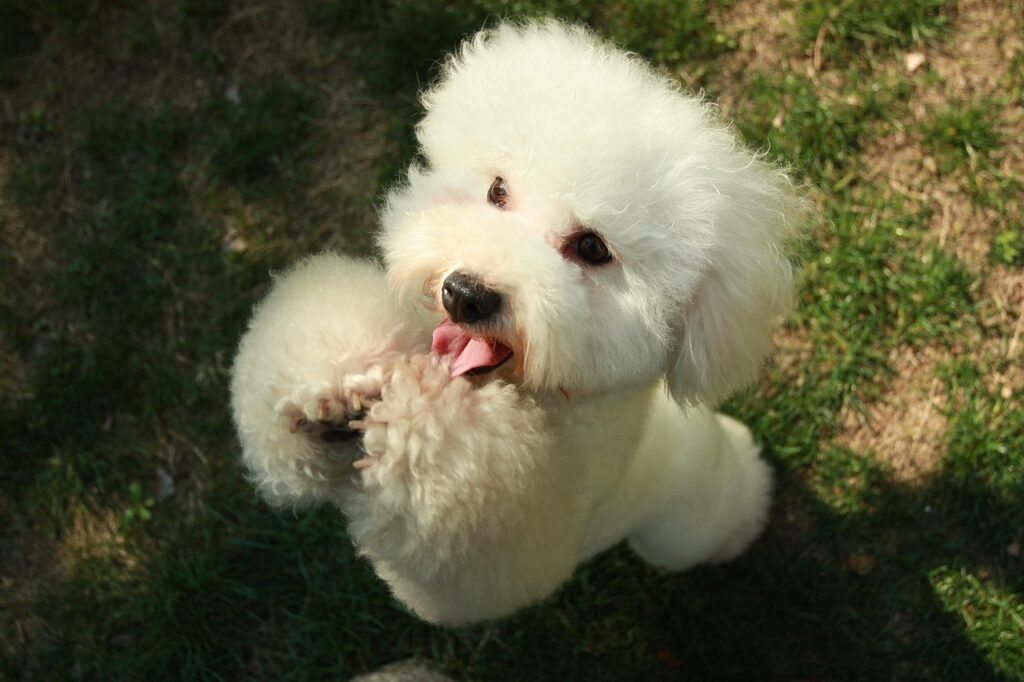
This image is property of pixabay.com.
5. Problem Behavior Correction
All dogs may exhibit problem behaviors at some point in their lives. It is important to address these behaviors promptly and effectively to prevent them from becoming ingrained habits.
5.1 Counter Surfing and Begging
Counter surfing and begging are common problem behaviors in dogs, especially when food is involved. To prevent these behaviors, establish clear boundaries and consistently reinforce them.
Teach your dog a designated place, such as a mat or bed, where they should go when you are preparing or eating food. Reward them for staying in their designated spot with treats or praise. Avoid giving in to begging behavior, as it can reinforce the unwanted behavior. Instead, provide alternative, dog-friendly treats or toys to redirect their attention.
5.2 Jumping on People
Jumping on people is a common issue of overexcitement or an attempt to seek attention. While it may seem harmless, it can become a nuisance and even pose a safety risk.
To address jumping, ignore the behavior and refrain from giving any attention or eye contact until your dog has all four paws on the ground. Once they are calm and not jumping, reward them with praise or a treat. Consistency is key to reinforcing the desired behavior and discouraging jumping. Encourage guests and family members to follow the same approach to maintain consistency in training.
5.3 Excessive Barking
Excessive barking can be a challenge to manage, but with consistent training and understanding, it can be addressed effectively. Identifying the triggers for barking can help determine the appropriate training approach.
To address barking, teach your dog a “quiet” or “enough” command by using positive reinforcement techniques. When your dog starts barking, say the command in a calm yet firm voice. Reward them for stopping the barking and remaining quiet. Consistency, patience, and identifying and addressing the underlying causes of barking are essential in resolving this behavior.
5.4 Chewing and Destructive Behavior
Chewing and destructive behavior often stem from boredom, anxiety, or excess energy. Providing appropriate outlets for chewing and addressing the underlying causes are crucial in managing and redirecting these behaviors.
Ensure your dog has access to a variety of safe and durable chew toys. Teach them which items are appropriate to chew on by actively redirecting them to their toys whenever they start chewing on inappropriate objects. Regular exercise, mental stimulation, and interactive play sessions can also help alleviate boredom and excess energy, reducing the likelihood of destructive behaviors.
6. Crate Training
Crate training is a valuable tool for ensuring your dog’s safety, comfort, and providing them with a designated space they can call their own.
6.1 Introducing and Familiarizing the Crate
Introduce your dog to the crate in a positive and gradual manner. Place the crate in an area of the house where your family spends time, ensuring it is comfortable and inviting. Leave the door open and place treats or toys inside to encourage your dog to explore the crate at their own pace.
Avoid forcing your dog into the crate or using it as a form of punishment. Instead, make it a positive experience by associating the crate with rewards, such as treats or feeding meals inside the crate.
6.2 Gradual Crate Training
To facilitate successful crate training, gradually increase the amount of time your dog spends inside the crate. Start with short durations and gradually build up to longer periods.
Encourage your dog to enter the crate by tossing treats inside. Once they are comfortable going in and out, provide treats and close the door for a few seconds, slowly increasing the duration. Gradually increase the distance from the crate and the duration of confinement as your dog becomes more comfortable.
6.3 Using Positive Reinforcement
Positive reinforcement is crucial in crate training, as it helps your dog associate the crate with positive experiences. Reward your dog with treats, praise, or their favorite toy whenever they willingly enter the crate or settle inside calmly.
Avoid letting your dog out of the crate if they are whining or barking, as it can reinforce these behaviors. Instead, wait for a moment of calm, and then release or reward them for their calm behavior.
6.4 Extending Time in the Crate
As your dog becomes more comfortable with the crate, gradually increase the amount of time they spend inside. Start by closing the door for a few minutes while you are in the same room. Slowly increase the duration until your dog can comfortably stay inside the crate for extended periods, even when you are out of sight.
Remember to provide your dog with mental and physical stimulation before crate time to help them settle down and associate the crate with relaxation and rest.
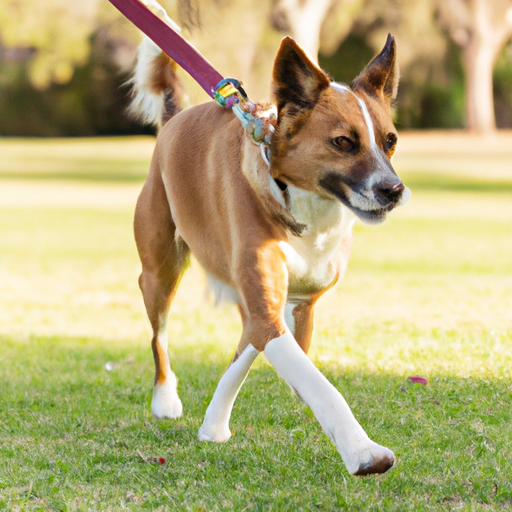
7. House Training
House training, also known as potty training, is an essential part of living harmoniously with your canine companion. It involves teaching your dog appropriate bathroom habits and establishing a routine.
7.1 Establishing a Routine
Establishing a consistent routine is key to successful house training. Set regular times for meals, bathroom breaks, and playtime. Take your dog outside to their designated potty area first thing in the morning, after meals, after waking up or naps, and before bedtime.
Use consistent verbal cues or commands, such as “go potty” or “be quick,” to signal what you want your dog to do. Reward them with praise and treats immediately after they eliminate in the appropriate area.
7.2 Positive Reinforcement
Use positive reinforcement to reinforce desired bathroom behaviors. When your dog eliminates outside in the designated area, reward them with praise and treats. This positive association encourages your dog to repeat the behavior and reinforces the established routine.
Avoid punishment or negative reinforcement if accidents happen indoors. Instead, focus on reinforcing good behavior and supervising your dog closely to minimize accidents and intervene if necessary.
7.3 Consistency and Patience
Consistency and patience are essential when house training your dog. Accidents may happen, especially during the early stages of training or if your dog is under stress or experiencing a change in routine. Remain patient and avoid scolding or punishing your dog. Instead, reinforce the desired behavior and adjust your training approach if needed.
Supervise your dog closely, especially during the initial stages of house training, to prevent accidents and provide immediate guidance when needed. With time, your dog will learn to understand and follow the established routine.
7.4 Handling Accidents
Accidents may occasionally occur, even with the most diligent house training efforts. If you catch your dog in the act of eliminating indoors, interrupt them with a firm yet calm “no” and immediately take them outside to finish in the appropriate area.
Clean any indoor accidents with an enzymatic cleaner specifically designed to eliminate odors. This eliminates the scent that may encourage your dog to eliminate in the same spot again. Avoid using ammonia-based cleaners, as they may create a scent similar to urine and confuse your dog.
Understand that accidents are a part of the learning process and remain consistent with your house training routine. Consistency and positive reinforcement will ensure that your dog becomes reliably house trained.
8. Advanced Training Techniques
Once your dog has mastered basic obedience commands, advanced training techniques provide mental stimulation and challenge for both you and your furry friend. These techniques can enhance your dog’s skills and provide opportunities for further bonding.
8.1 Off-Leash Training
Off-leash training involves teaching your dog to respond to commands and remain obedient when not physically tethered to a leash. It requires a solid foundation in basic obedience and a high level of trust between you and your dog.
Practice off-leash training in a secure and enclosed area, gradually increasing the level of distraction and distance. Start with basic commands like “come” or “stay” and reward your dog for responding correctly. Use positive reinforcement, such as treats or praise, to encourage reliable off-leash behavior.
8.2 Retrieval Training
Retrieval training, also known as fetch training, is a fun and practical skill that enhances your dog’s physical exercise and mental stimulation. It is particularly useful when you want your dog to retrieve objects or toys.
Start by teaching your dog to hold and release an object, such as a toy or ball. Encourage them to take the object in their mouth by offering treats or rewards. Once they grasp the concept of holding the object, toss it a short distance and use the command “fetch” or “get it.” Reward them with praise and treats when they retrieve and return the item to you.
8.3 Tricks and Special Skills
Teaching your dog tricks and special skills adds an element of fun and uniqueness to your training sessions. Tricks can range from simple behaviors like rolling over or playing dead to more complex tricks like weaving through your legs or jumping through hoops.
Break down each trick into smaller steps and use positive reinforcement to reward your dog for each successfully completed step. Be patient and repeat each step consistently until your dog understands the trick. With practice and positive reinforcement, your dog will learn a repertoire of tricks that will impress and entertain.
8.4 Agility and Obedience Competitions
Participating in agility and obedience competitions provides an opportunity for you and your dog to showcase the skills you have developed together. These competitive events test your dog’s obedience, agility, and ability to perform specified tasks accurately and efficiently.
To prepare for competitions, practice the required skills and commands regularly. Enroll in obedience or agility classes to enhance your dog’s training and ensure they are familiar with competition environments and equipment. Participating in such events can strengthen the bond between you and your dog and provide a sense of accomplishment for both of you.
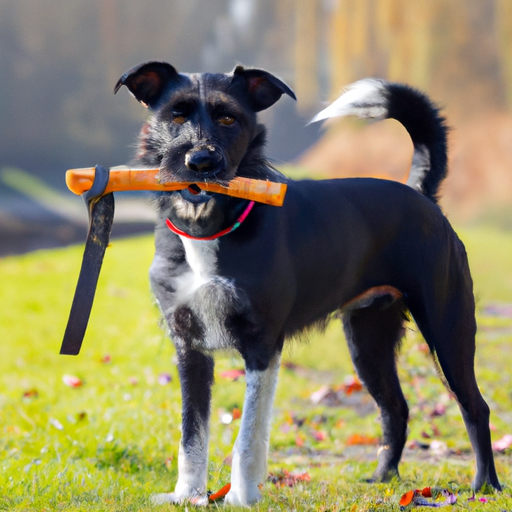
9. Communication and Body Language
Understanding your dog’s body language and using clear communication helps establish trust, reinforce training, and strengthen your bond. Dogs communicate primarily through body language, and being able to interpret their signals allows you to respond appropriately.
9.1 Understanding Canine Body Language
Familiarize yourself with common canine body language cues, such as tail position, ear position, and facial expressions. A wagging tail can indicate excitement or friendliness, while a tucked tail may signify fear or nervousness. Erect ears generally indicate alertness, while flattened ears may convey submission or fear.
Observe your dog’s body language in different contexts to gain a better understanding of their emotions and needs. This understanding will help you respond appropriately and modify training techniques as necessary.
9.2 Establishing Clear Communication
Consistent and clear communication is essential for effective training and understanding between you and your dog. Use short, concise commands paired with clear hand signals to ensure your dog understands what you are asking of them.
Practice using the same commands consistently to avoid confusion and reinforce learned behaviors. Encourage family members or anyone involved in your dog’s care to use the same commands and techniques to maintain consistency and clarity.
9.3 Building Trust and Respect
Building trust and respect forms the foundation of a strong and healthy relationship with your dog. Be patient, kind, and consistent in your training and interactions with your furry friend.
Avoid using force or punishment-based techniques, as they can damage the bond of trust between you and your dog. Instead, focus on positive reinforcement and reward-based training, which fosters mutual trust and respect. Make training sessions enjoyable for your dog by incorporating play and rewarding good behavior.
9.4 Being a Pack Leader
Establishing yourself as a confident and consistent pack leader helps your dog feel secure and comfortable, allowing them to look to you for guidance. Being a pack leader means setting clear boundaries, being consistent with training, and providing structure and routine.
Incorporate leadership exercises into your training sessions, such as having your dog wait for permission before entering doorways or feeding time. Reinforce your role as the pack leader through consistent training and reward-based interactions with your dog. This will help establish a healthy hierarchy and a well-behaved companion.
10. Maintaining Training Consistency
Consistency is the key to maintaining your dog’s training throughout their life. Regular practice and reinforcement help solidify their learned behaviors and ensure that they remain well-behaved companions.
10.1 Practice Regularly
Regular practice is crucial in maintaining the training foundations you have established with your dog. Set aside dedicated training sessions, even if they are short, to reinforce obedience commands, tricks, and desired behaviors.
Consistency in training means regularly reviewing and practicing known commands and behaviors. This helps your dog stay sharp and ensures that they continue to respond reliably to your cues.
10.2 Reinforce Training throughout Dog’s Life
Reinforcement is important throughout your dog’s life, even after they have mastered basic obedience. Continue to reinforce and reward good behavior to maintain their training and prevent any regression.
Use daily interactions, such as meal times or play sessions, to reinforce basic commands and manners. Reward your dog for demonstrating good behavior and responding to commands promptly.
10.3 Enlist Professional Help if Needed
If you encounter training challenges or feel overwhelmed, do not hesitate to seek the assistance of a professional dog trainer or behaviorist. They can provide guidance, personalized training plans, and address any specific issues you may be facing.
A professional trainer can work with you and your dog to address problem behaviors and refine training techniques. They can also provide valuable advice and support throughout your dog’s training journey.
10.4 Stay Patient and Positive
Training a dog takes time, patience, and a positive mindset. Understand that dogs, like humans, learn at different paces and have unique personalities. Stay patient and avoid becoming frustrated or discouraged.
Maintain a positive and enthusiastic attitude throughout training sessions. Dogs respond best to positive reinforcement and thrive in an environment filled with praise, rewards, and love.
By utilizing positive reinforcement training, teaching basic obedience commands, leash training, socialization techniques, addressing problem behaviors, crate training, house training, advanced techniques, understanding communication and body language, and maintaining consistency, you can ensure that you have a well-behaved companion by your side. Remember, training is a lifelong journey that strengthens the bond between you and your dog and enhances the overall quality of their life. Enjoy the process and embrace the rewards of having a well-trained and happy canine companion!




